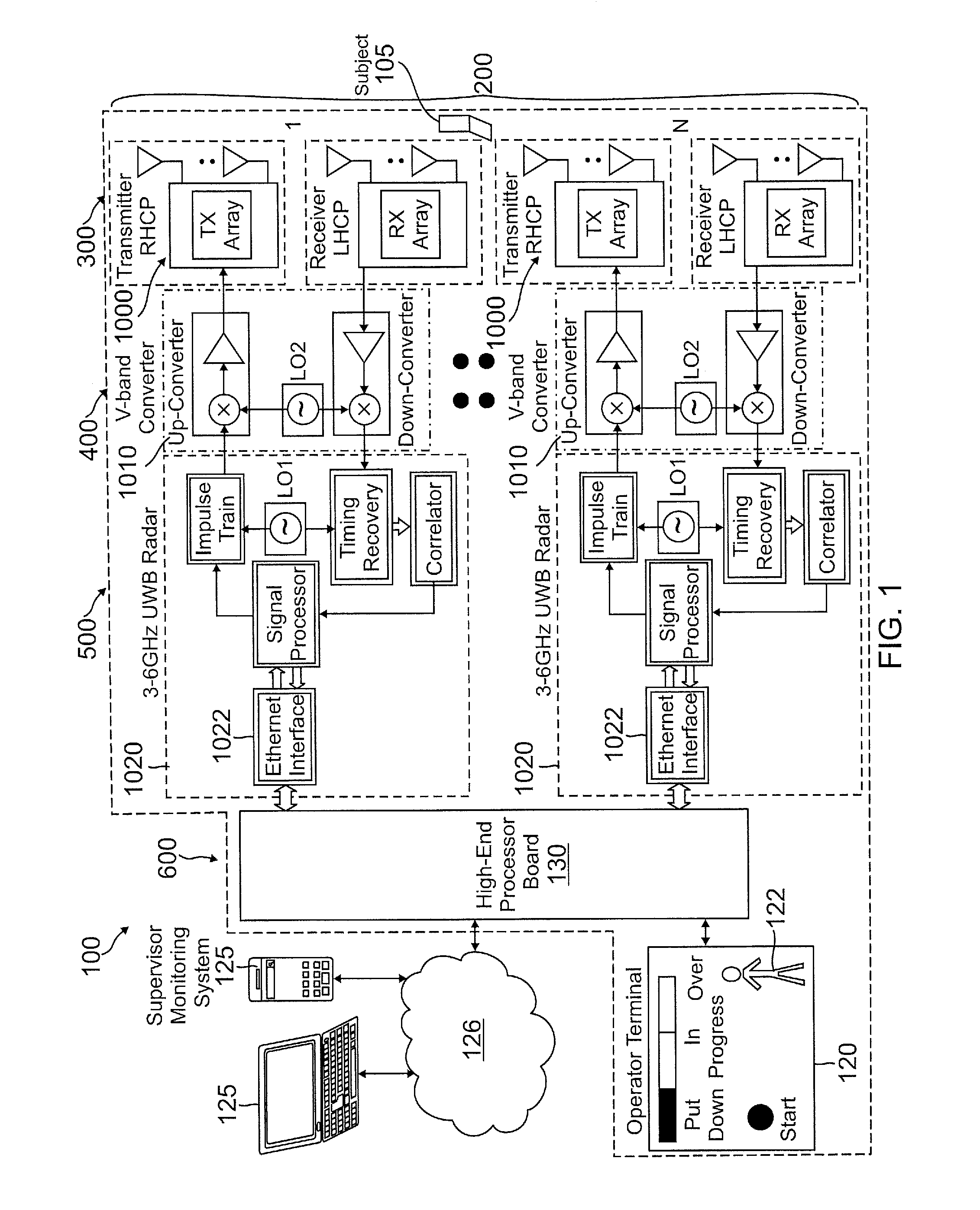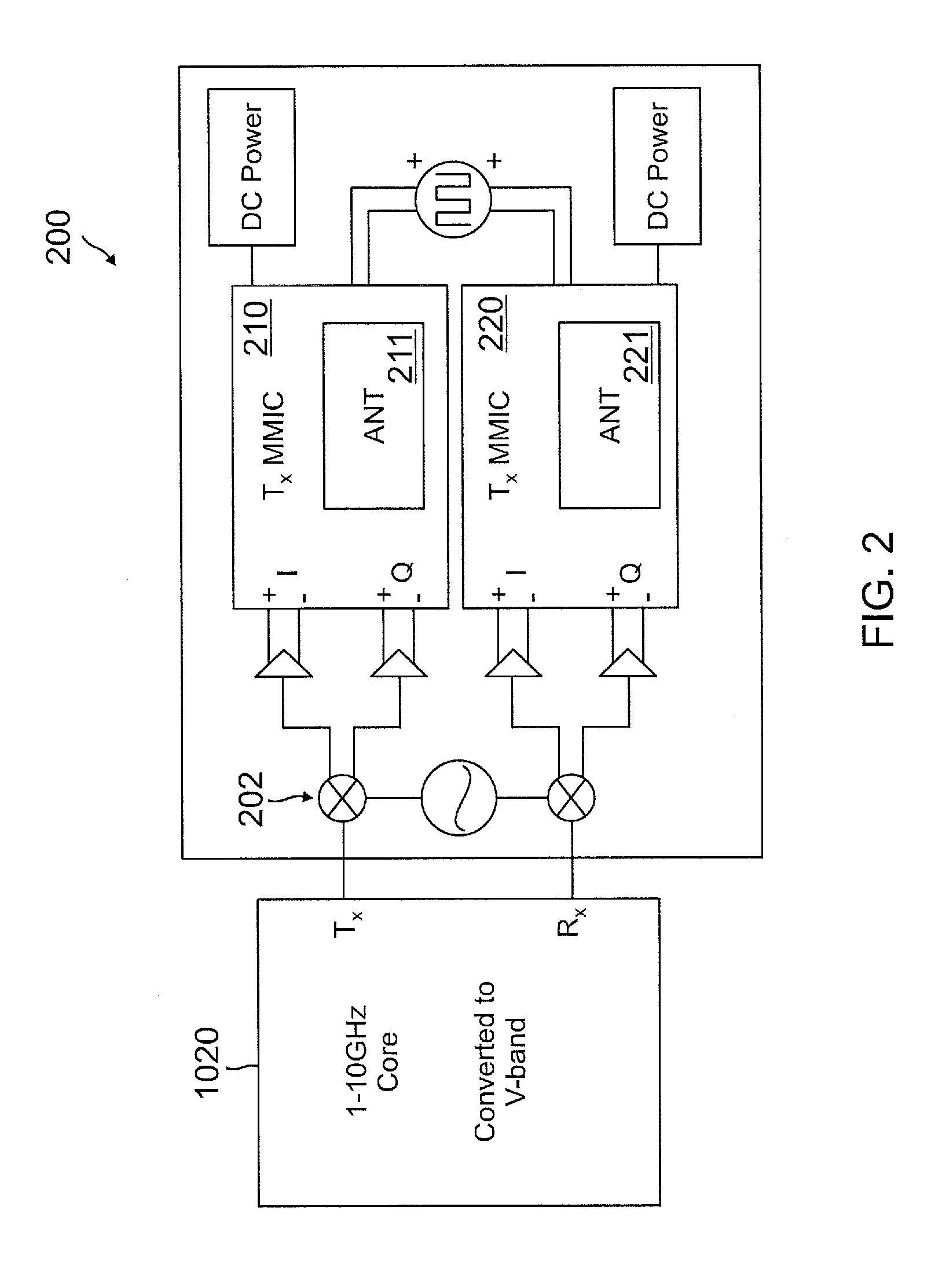Handheld and portable scanners for millimeter wave mammography and instant mammography imaging
a millimeter wave and instant mammography technology, applied in the field of sensor and imaging systems, can solve the problems of large, not portable, bulky system, generally requires a moderately expensive system,
- Summary
- Abstract
- Description
- Claims
- Application Information
AI Technical Summary
Benefits of technology
Problems solved by technology
Method used
Image
Examples
Embodiment Construction
[0023]Embodiments of the disclosure address the need for a handheld or portable scanning device and real-time imaging that can be used, for example, in a primary care physician's office. Methods and systems are disclosed for ultra wide band (UWB) sensor imaging for medical diagnosis that address the needs for early detection of cancer that does not require patient contact or injections, does not expose the patient to unsafe radiation, does not require painful compression of breast tissue such as experienced with conventional X-ray mammography, does not require a high level of skill on the part of the operator to obtain accurate scans while ensuring patient safety, and provides a low cost, portable or handheld, real-time imager that can be used, for example, in a primary care physician's office. In one embodiment, mobile, handheld, and versatile performance can be obtained in any office or even at home on account of the small volume of the sensor and imaging units which can be on the...
PUM
 Login to View More
Login to View More Abstract
Description
Claims
Application Information
 Login to View More
Login to View More - R&D
- Intellectual Property
- Life Sciences
- Materials
- Tech Scout
- Unparalleled Data Quality
- Higher Quality Content
- 60% Fewer Hallucinations
Browse by: Latest US Patents, China's latest patents, Technical Efficacy Thesaurus, Application Domain, Technology Topic, Popular Technical Reports.
© 2025 PatSnap. All rights reserved.Legal|Privacy policy|Modern Slavery Act Transparency Statement|Sitemap|About US| Contact US: help@patsnap.com



